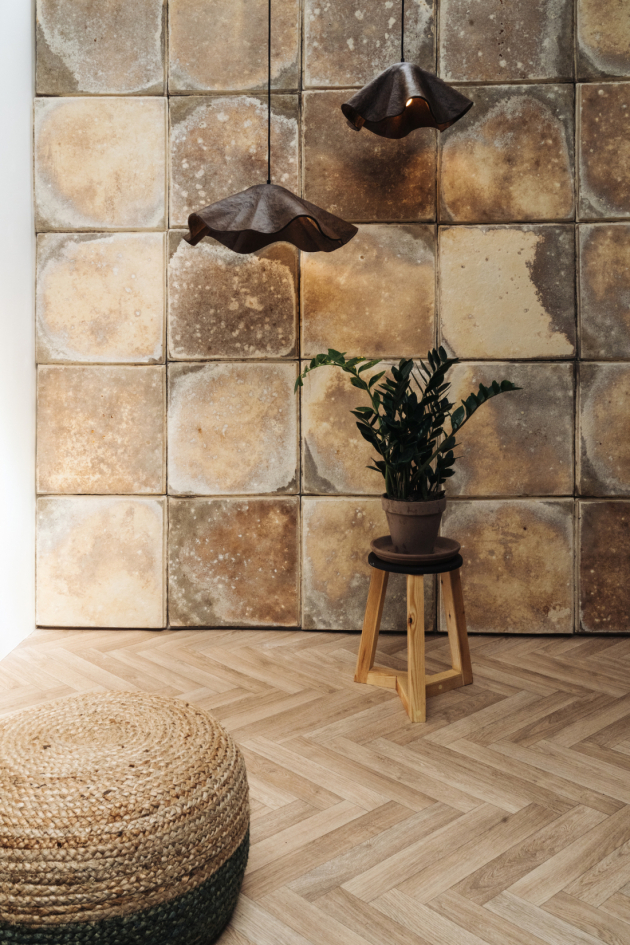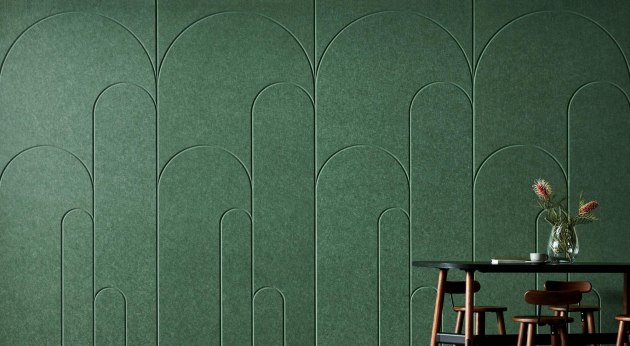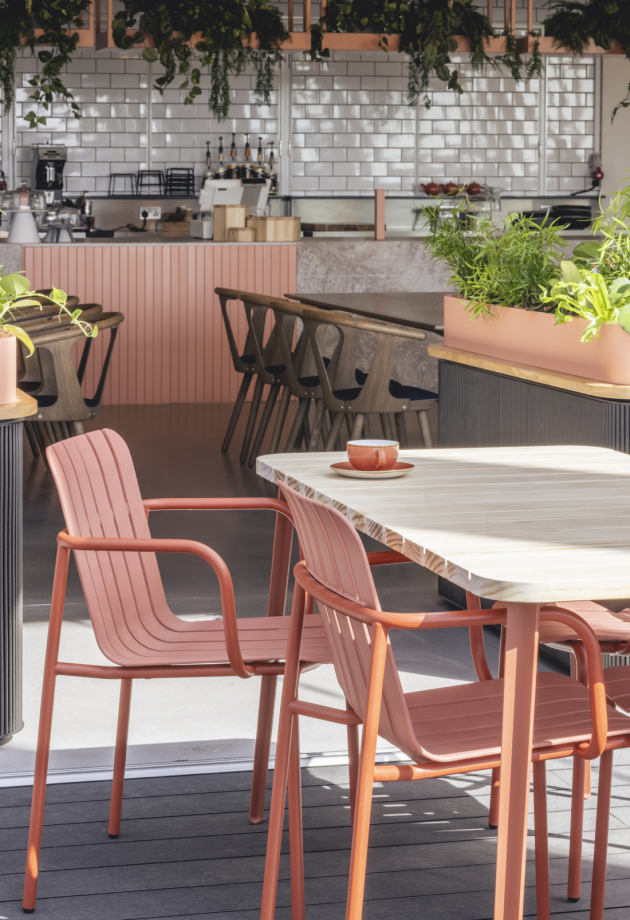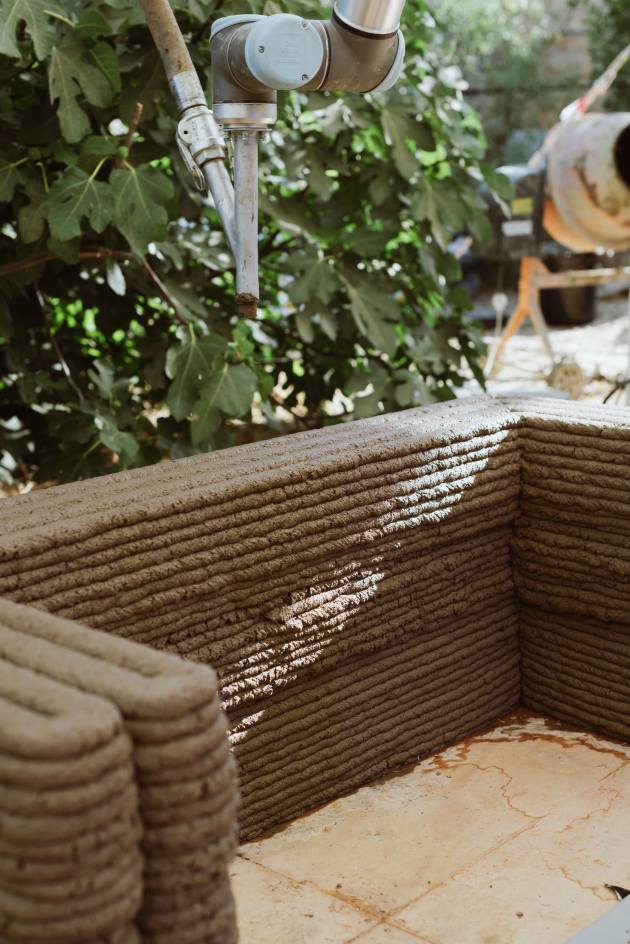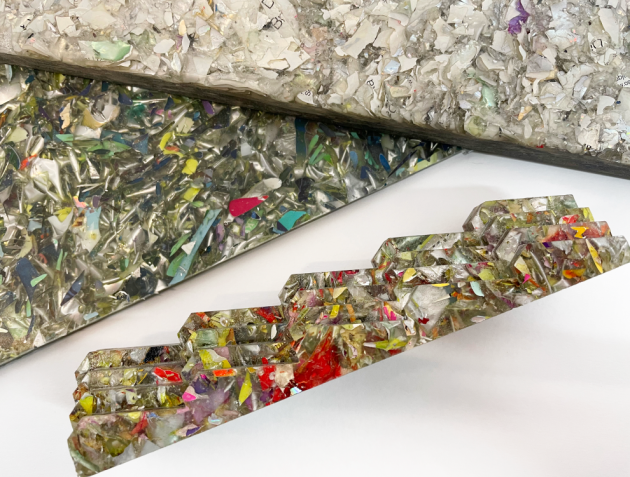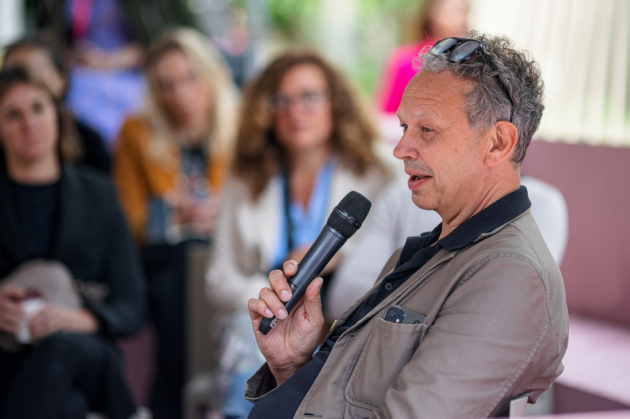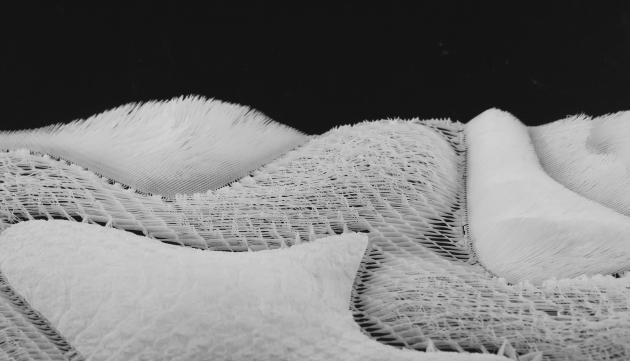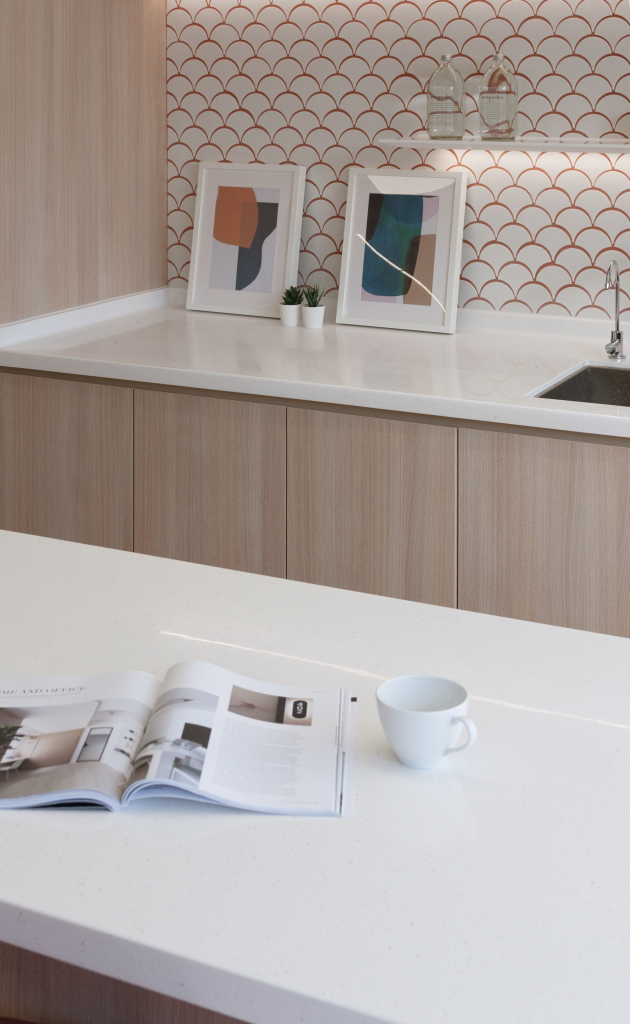Dutch Design Week 2022: Our top picks.
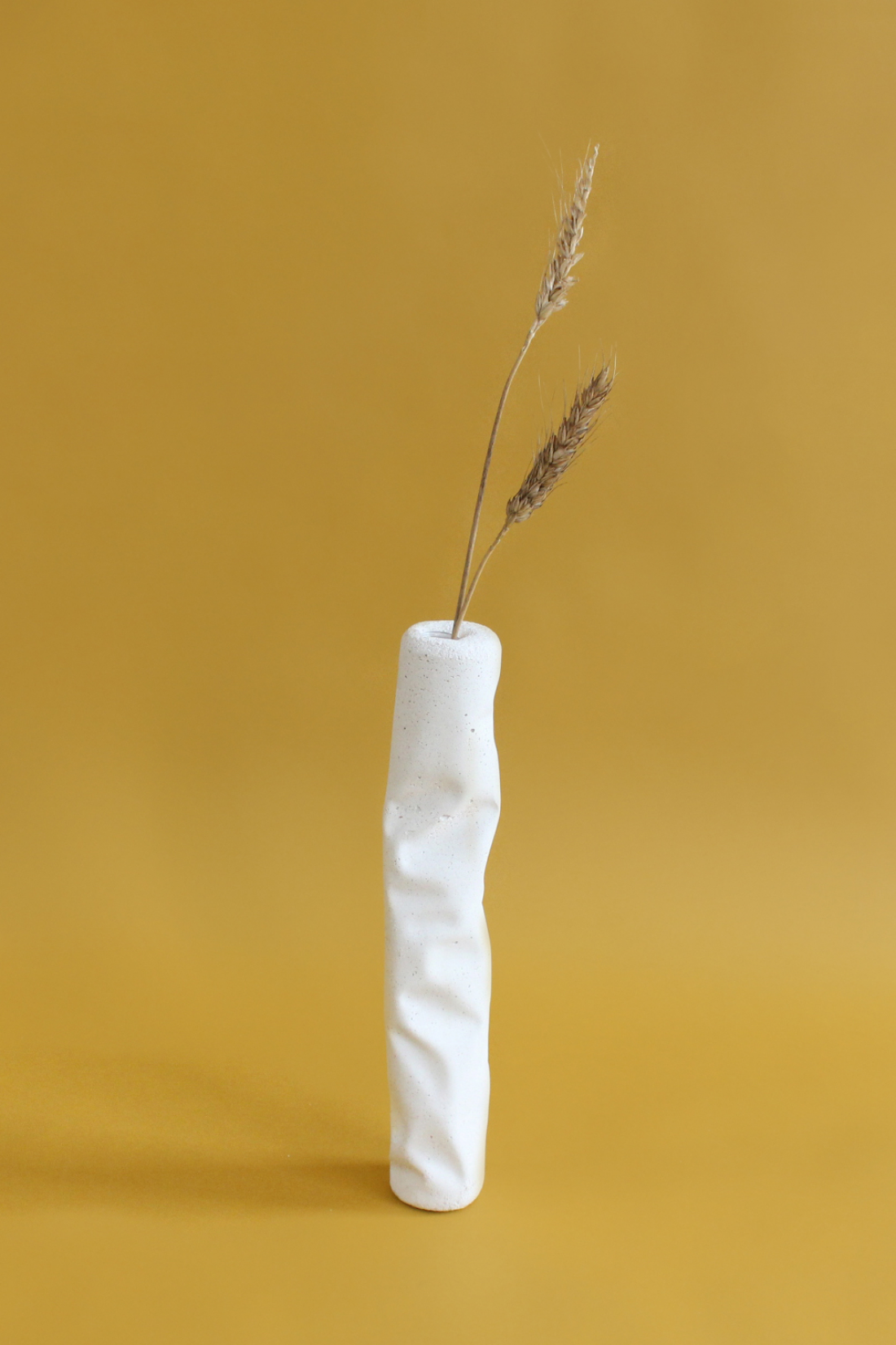
Courtesy of Midushi Kochar
From bio-based interventions to circular system restructure, here are some of our top picks from Dutch Design Week that are revolutionising the material realm.
Dutch Design Week returns with a bang, continuing to be an active hive of speculative design thinking and material investigation.
Taking on the expanse of the city of Eindhoven for just over a week, and with just two days to explore its breadth, it was impossible to examine its full offering. However, here we share some of the bio based and circular solutions we were lucky enough to pass by, each exploring a different waste stream.
StoneCycling: BioBased Tiles
This year, StoneCycling stunned with an inspiring spectrum of bio-based tiles and waste derived glazes. With the debris of the construction and demolition industry accounting for 30% of all waste in Europe, movement from a linear to a circular economy has never been so paramount. StoneCycling is determined to inspire change in the industry, proving waste to be the raw material of tomorrow - both technically and aesthetically.
Responsible for the first ever bio-based tile that is grown through bacteria, this carbon footprint lowering solution is three times stronger than a concrete block and 20% lighter. Powered by Biomason technology, BioBased Tiles can be applied on the floor and walls for both interior and exterior use and are compliant with industry standards. The product's manufacture takes inspiration from one of nature’s most robust and forgiving materials, coral. Within a multi-patented process, calcium and carbon is combined to create a non-carbon emitting tile.
Its waste based glazes are an ongoing collaboration with Alchemist, Daria Biryukova. Together they have developed a library of rich colours and textures using metallurgical by-products that have unlimited re-use.
StoneCycling are passionate about introducing regenerative building materials and systems to a wide range of applications. In addition to its future-proof materials, it has also developed a dry-stack system that can be disassembled at the end of its life without using motor or adhesives. This system is particularly good for retail and hospitality where demolition and renovation is frequent, allowing reuse of the walls and facades within a zero waste cycle.
To find out more about StoneCycling’s products, click here
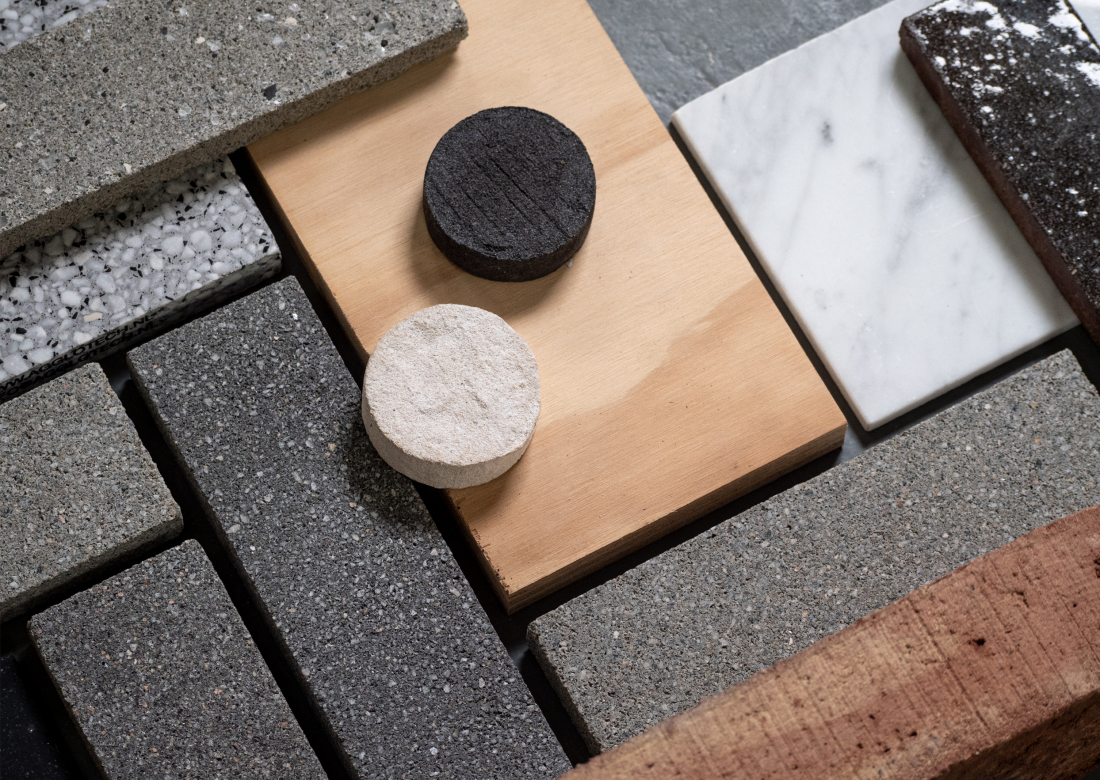
Courtesy of StoneCycling
IHOG & Minerva: A natural binder for hemp fibres
The specification of natural fibres such as hemp and flax has elevated since the turned focus on biophilic design and its revealed psychological benefits. However, natural fibres like hemp are typically used in combination with a synthetic binder instead of natural - severing the lifecycle of the material.
Recognising the limitations of this manufacturing process, the Minerva Art Academy and IHOG (Innovation Hub East Groningen) have worked in collaboration to explore the potential of potato starch and magnesium oxychloride as natural binders to combine hemp fibres.
The team of designers and researchers include Jakob Zwinderman, Jack Brandsma, Sarah Laura Peyrel and Sebastiaan Baar; all of which interrogate the potential of these naturally and locally derived binding recipes and devise a series of household objects via casting methods from the composite. Some of the designers work with hemp as a felt and others with the fibres untouched. Ranging from lighting, to tiles, restored antique furniture and seating, these crafted objects celebrate the textured, whiskery surface inherent in hemp whilst being entirely functional and fit for purpose.
To find out more about the project, click here
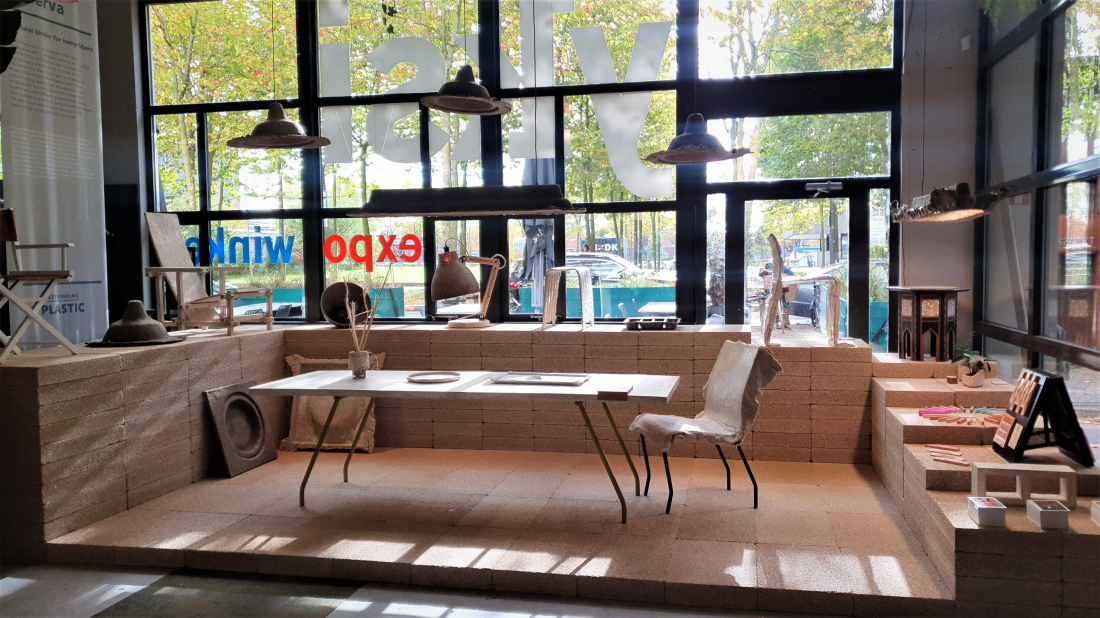
Courtesy of IHOG & Minerva
Urban Reef: Max Latour & Pierre Oskam
Our next best seen bio-invention comes from the intrepid 2021 start up Urban Reef, a research and design studio focussed on all-life considered design solutions for a bio-inclusive city.
Situated in Dutch Design Week’s Landscape Literacy exhibit - a collection of radical designers and thinkers, reconfiguring our perceptions of what constitutes a landscape, Urban Reef put forward reformist ideas on living in harmony with nature within a dense cityscape.
Urban Reef’s founders include Pierre Oskam, a landscape architect and concept designer at Urban Reef and Max Latour, an architect, affiliated with the Robotic Building Lab at TU Delft and computational designer at Urban Reef.
The Rotterdam based design team view a city as a reef, a living framework for its inhabitants. Their natural algorithm based 3D prints are fabricated with living, waste based printed filaments, such as cow dung and cellulose. Through computer generation, these layers of living material are built up to produce a rich labyrinth of shelters that host a diversity of life and give room to spontaneous growth of living organisms within the metropolis. The 3D printed vessels can absorb water, from which they can facilitate micro-climates and nutrients.
Urban Reef challenges our current human-centric perceptions of a cityscape and encourages us to live together with a multitude of species within our built environments.
To find out more about Urban Reef, click here
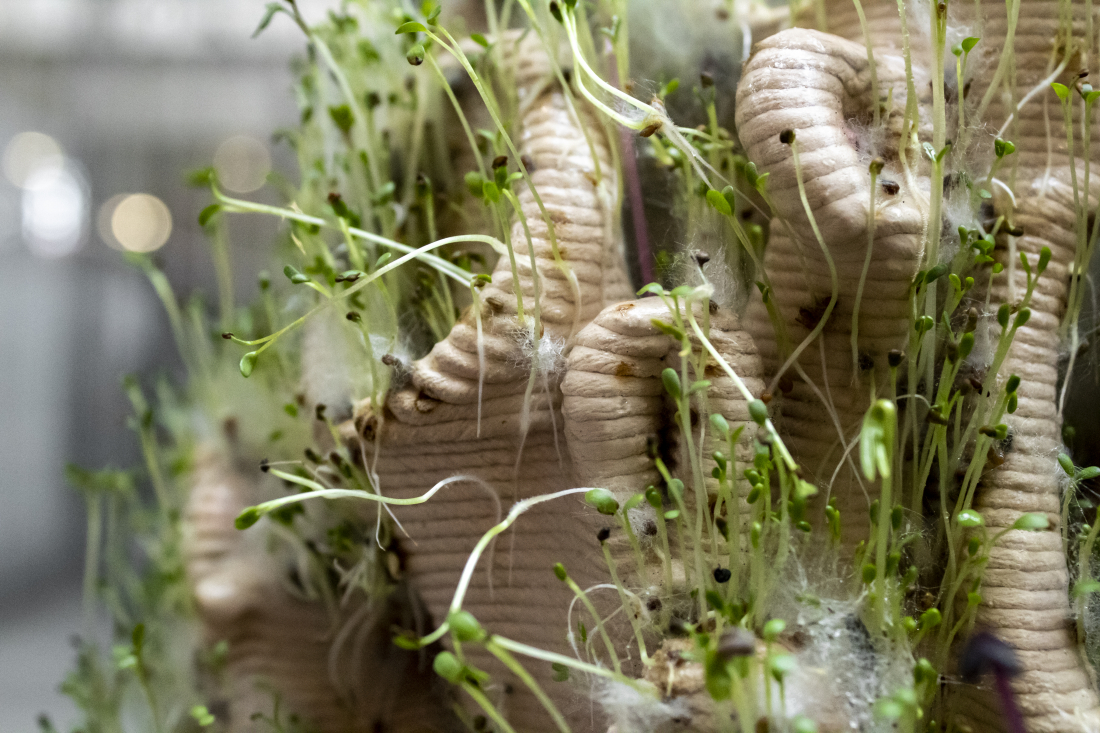
Courtesy Max Latour & Pierre Oskam
Gereon Wahle: From Greener Pastures
Design Academy Eindhoven alumna, Gereon Wahle is designing loops into the leather industry. There are 2.49 million tonnes of leather waste either burned or sent to landfill annually. From a commercial perspective, there is so far only one solution to tackle this linear manufacturing line, which is bonded leather. Learning about the evident lack of progression in repurposing this waste-stream, Wahle set out to design circular strategy into the industry and so From Greener Pastures was born.
His 100% leather, terrazzo-like composite is crafted from shredding a variety of different leathers, sourced from across The Netherlands and bonding them together with a biological hide glue (created from raw hide and leather cut offs). The pieces take on a number of different colours and speckled effects, their composition defined by the offcuts available at the time of the making process. They can also be pressed into any shape, exciting us with the three dimensional application of the composite.
Wahle’s next enterprise is to create furniture from his developed composite, when the furniture comes to the end of its lifecycle it can be shredded and formed into future pieces.
From Greener Pastures helps leather manufacturers implement use into their offcuts and regeneratively lengthen the material’s lifecycle.
To learn more about the work of Gerreon Wahle, click here
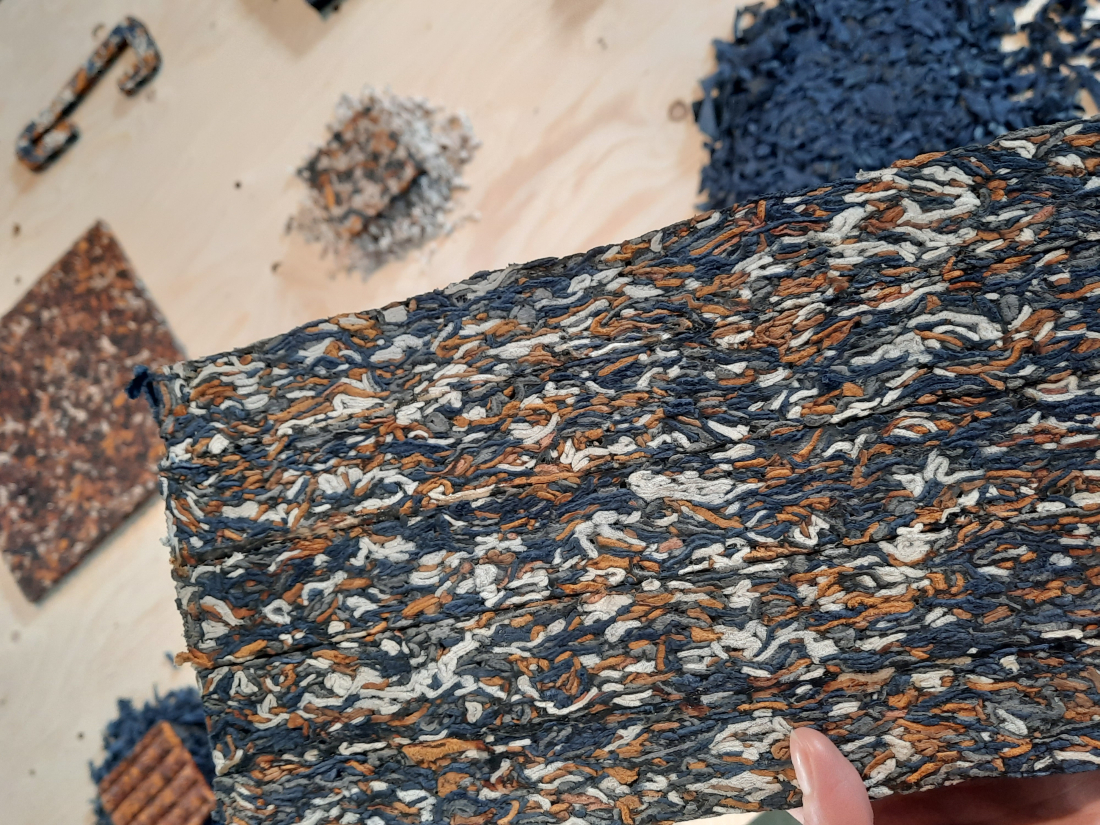
Courtesy of Gereon Wahle
Midushi Kochar: Eggware
Virgin materials are now finite and expensive, prompting designers across sectors to re-evaluate their production methods. An advocate and implementer of the circular statement, “waste is a design flaw”, Central Saint Martin’s industrial design graduate, Midushi Kochar takes full advantage of the abundance and low price point of waste from the poultry industry.
Collecting eggshells from cafés dotted around Kings Cross, Kochar redefines the poultry waste-stream along with an algae based binder into Eggware - a series of bio ceramic tableware objects that are fully biodegradable. Designed for street food scenarios, after the product’s use they can be crushed and thrown away into the compost heap.
To find out more about Eggware click here
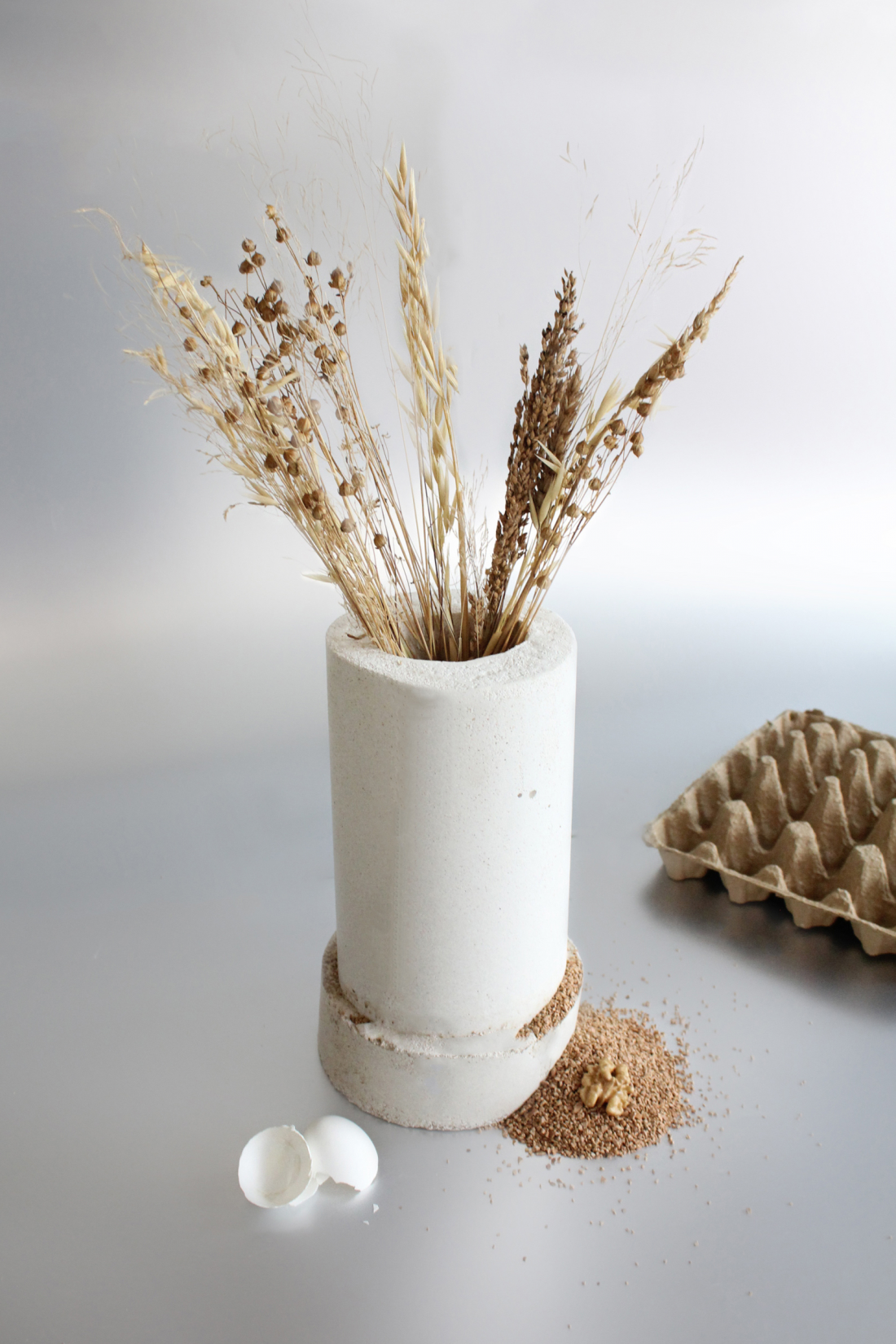
Courtesy of Midushi Kochar
Austeja Platukyte: Biodegradable algae-based foam packaging
Austeja Platukyte’s most recent bio-based brilliance aims to improve the environmental impact the packaging industry is having on our planet.
Following a zero waste philosophy, the completely natural and compostable packaging prototypes Platukyte presented at this year’s Dutch Design Week are derived from algae. She decides on an algae based recipe rather than the popularly used corn starch to counteract bio-dependence on cornstarch since it is a worldwide food resource.
With online ordering as a consumer behaviour most likely here to stay, Austeja Platukyte’s algae foam material ensures that leftover packaging won’t be.
To learn more about the work of Austeja Platukyte, click here
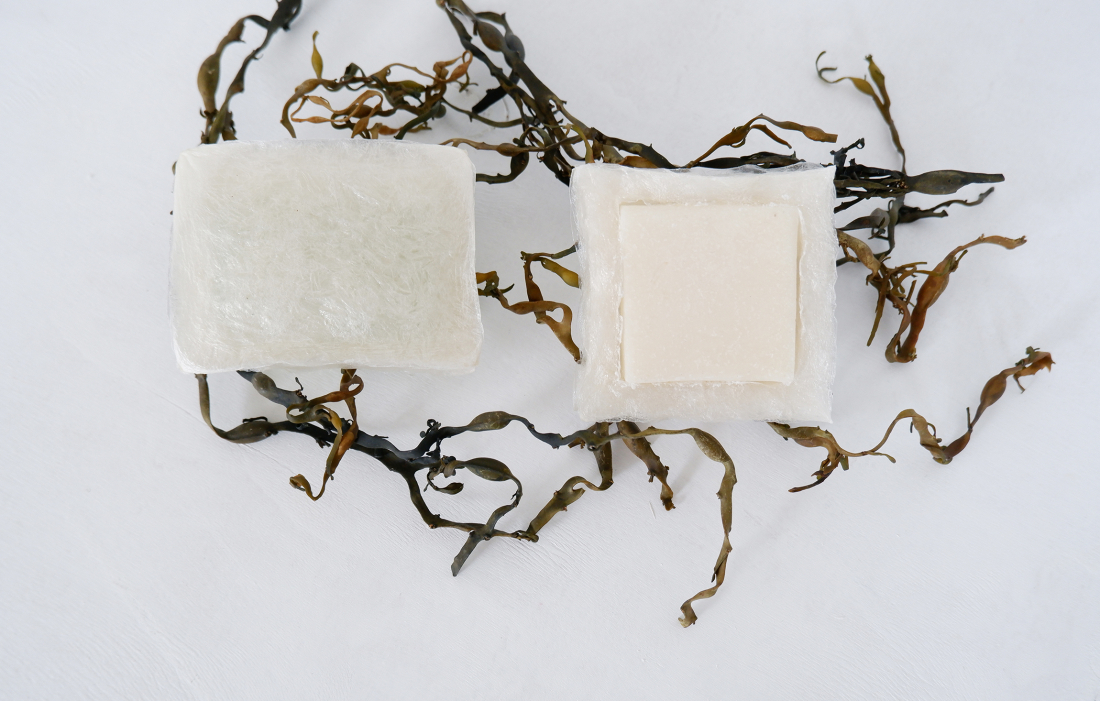
Courtesy of Austeja Platukyte
View more from Dutch Design Week 2022 here and drop into Material Source Studio to chat to our materialists about emerging bio-based materials and products for your next project.


